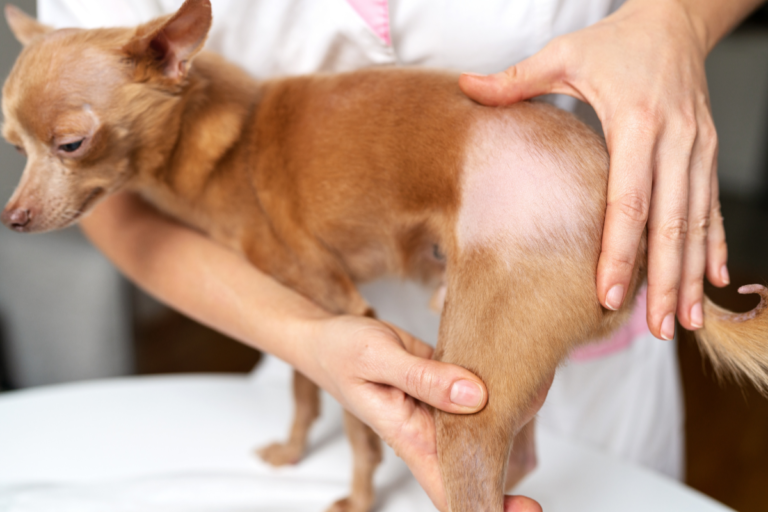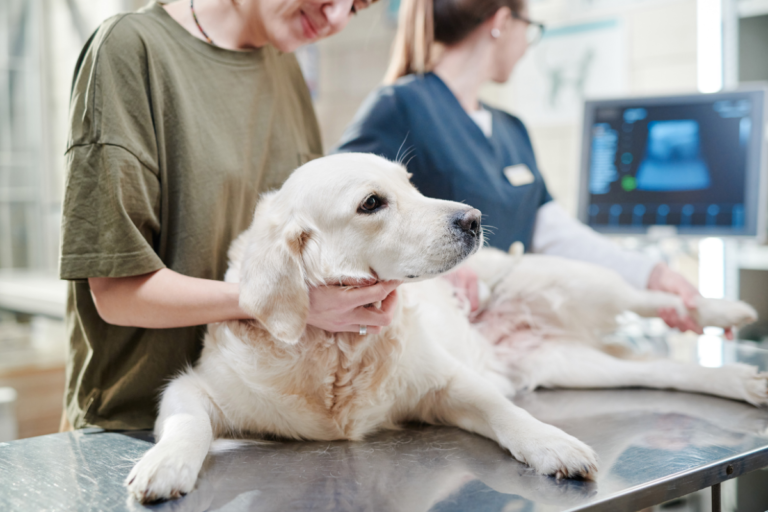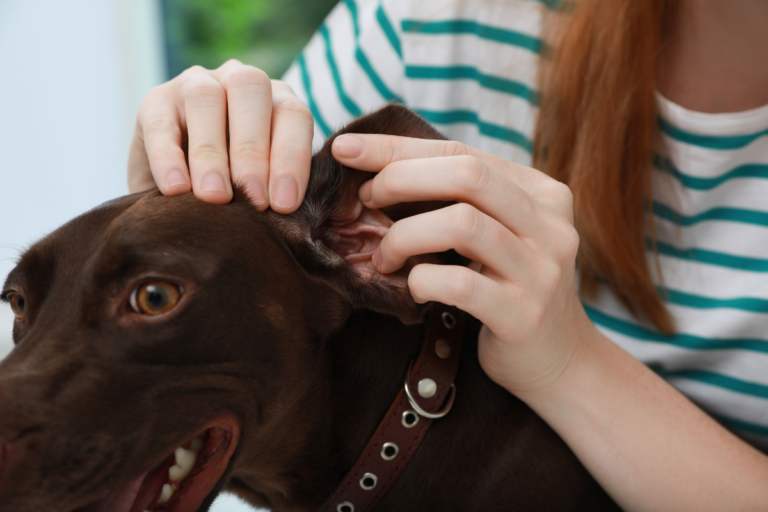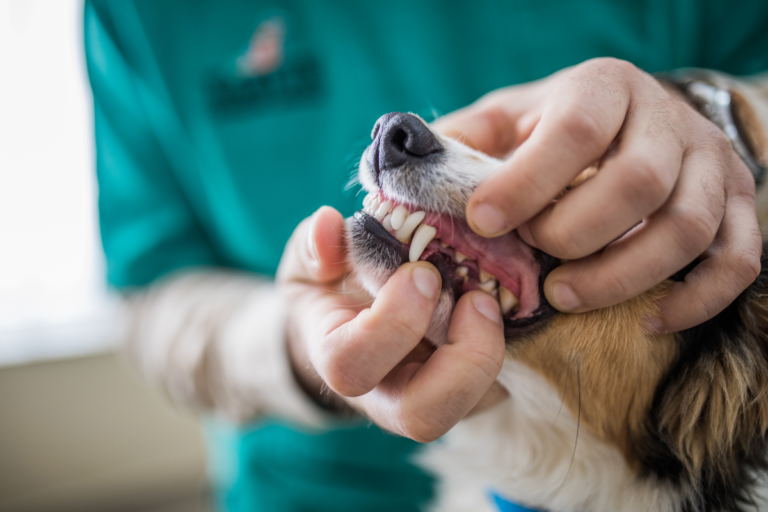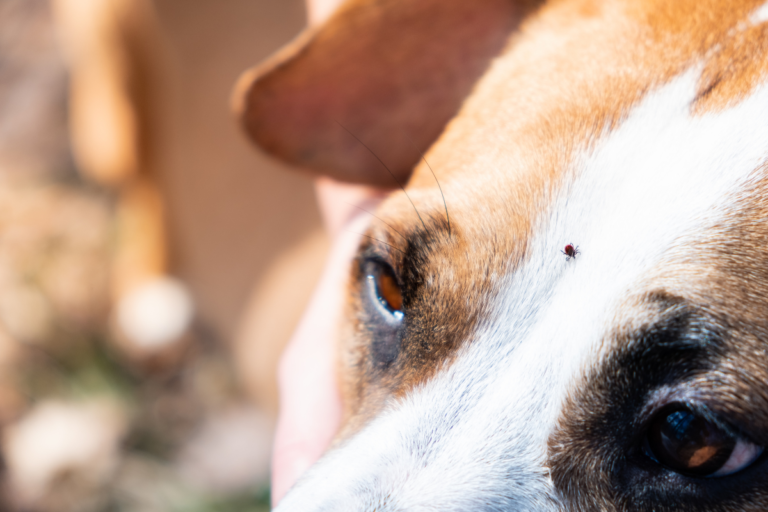Barking Up the Right Tree: Female Dog Bladder Infection Symptoms
Understanding UTIs in Dogs
We’ve all been there—our dogs getting uncomfortable thanks to urinary tract infections (UTIs). It’s a worry no one likes, especially since they tend to hit our female dogs harder. Healthier dogs mean happier homes, so let’s get the lowdown on what causes these pesky infections and which pups are most at risk.
Causes of UTIs in Dogs
UTIs are what happen when pesky bacteria throw a party in your dog’s bladder. Here are the usual suspects that gate-crash your pooch’s urinary system:
- Bacterial Invaders: Yeah, you guessed it—E. coli is the bacteria best known for gate-crashing urinary tracts.
- Bladder Stones: These pesky critters can block things up, creating the perfect spot for an infection to set up camp.
- Bladder Tumors: By blocking urine flow, they lay out the welcome mat for bacteria.
- Anatomical Quirks: A hooded vulva in female dogs can be a welcome mat for bacteria.
- Sloppy Hygiene: Long-furred pups especially need regular grooming to keep nasty bacteria at bay (PetMD).
Risk Factors for UTIs in Female Dogs
Female pooches have the short end of the stick when it comes to UTIs. Here’s why:
Anatomical Quicksand
With their shorter, wider urethras, girl dogs practically roll out the red carpet for bacteria looking to sneak into the bladder. This makes UTIs a girl dog’s regular dance partner (Animal Care Center).
Age and Overall Health
Older dogs, regardless of breed, and those with health hiccups like Cushing’s disease or the ‘betes, are basically walking invitations for UTIs to crash the party. Their bodies’ defenses aren’t up to snuff, leaving the door wide open for infection (PetMD).
Weight and Grooming
Chunky dogs with extra skin folds and a hooded vulva need some extra TLC. All those folds can hide bacteria, so regular grooming and a quick wipe with pet wipes post-potty can make a world of difference (PetMD).
| Factors | Increased Risk for Female Dogs |
|---|---|
| Shorter Urethra | Easier for bacteria to wander in |
| Hooded Vulva | Bacteria hideout |
| Overweight | Bacteria hide-and-seek master |
| Underlying Conditions | Body’s guards asleep on the job |
Knowing these risks means we can outsmart UTIs before they cause a ruckus. Regular vet visits, cleanup, and grooming rituals aren’t just for show—they’re all about keeping our fur babies in top shape. For more on shooing away UTIs, check out our handy guides on grooming habits for UTI prevention and keeping your dog hydrated and healthy.
Symptoms of UTIs in Dogs
Recognizing Signs of UTIs
Hey there, fellow dog lovers! We all want our pups to be in tip-top shape, right? Well, one thing that pops up more often than we’d like is those pesky urinary tract infections—or UTIs. Your pooch can’t exactly send you a text saying “Hey, this hurts,” so it’s up to us to spot those telltale signs. Here’s some wisdom from the Animal Care Center of Castle Pines and Cornell University’s Vet College about what to keep an eye on:
- Quick run to the bathroom: If Fido’s asking to go out every five minutes and leaving dribbles, something’s up.
- Lickety-split: Notice Rover going to town licking themselves “down there” more than usual? Might be trying to soothe some irritation.
- Oopsies indoors: Yikes! An accident in the house could mean a trip to the vet is needed, not just another carpet cleaner.
- The struggle is real: If your dog’s straining or looking like they’re doing their taxes when they pee, that’s a red flag.
- Seeing red or cloudy pee: Not the new doggie water color, folks—this one’s a solid head to the vet situation.
- Sniff test failure: If your dog’s urine smells worse than your teenager’s socks, time for a checkup.
Severity and Variability of Symptoms
Got it, symptoms aren’t all the same. Depends on what kind of bacteria we’re dealing with, our fur baby might show different levels of discomfort, according to the wise folks at Animal Care Center of Castle Pines. Here’s a nifty table to help us all see what’s what:
| Symptom | Mild UTI | Severe UTI |
|---|---|---|
| Quick bathroom runs | 👍 | 👍👍👍 |
| House accidents | 👍 | 👍👍 |
| Blood in pee | 👍👍 | 👍👍👍 |
| Peeing strain | 👍👍 | 👍👍👍 |
| Crying or whining | 👍 | 👍👍👍 |
| Licking down there | 👍 | 👍👍 |
| Bad smelling pee | 👍 | 👍👍 |
Key:
👍Light👍👍Moderate👍👍👍Severe
Getting a jump on these signs means we can roll up to the vet and get our dogs feeling groovy again. Don’t forget to peek at bloat symptoms dog, dog heart disease, and dog diabetes symptoms for more helpful hints on keeping your buddy healthy. We all want these floppy-eared family members to live their best lives, after all. Don’t forget there’s tons more to see on dog diseases and symptoms and healthiest dog breeds right here on our site. Keep those tails wagging, folks!
Preventing UTIs in Dogs
We all want our furry buddies to be as healthy and joyful as possible. For female dogs, that means dodging the dreaded urinary tract infections (UTIs). We’ll walk you through some handy tips to help keep those pesky infections at bay. We’ll cover grooming tips and talk about the importance of hydration and building healthy habits.
Grooming Practices for UTI Prevention
Keeping your dog’s appearance in tip-top shape does more than make them look good—it’s a front-line defense against UTIs. Regular grooming helps prevent the build-up of skin bacteria that can cause trouble.
-
Snip-Snip for Preputial Hair: Even though this one’s a tip for the boys, just a heads-up that trimming preputial hair helps a lot in cutting down bacteria (source: PetMD).
-
Mind the Vulvar Hygiene: Girls with hooded vulvas or carrying a few extra pounds are at a higher risk for UTIs. A quick clean-up with pet wipes post-potty can lower the chances of bacterial growth (PetMD).
-
Scrub-a-Dub-Dub with Regular Baths: Keep your dog fresh with regular baths using mild shampoos. It’ll work wonders in keeping bacteria off their skin and coat.
-
Peek for Problems: Make it a habit to check your dog’s private parts for any unusual signs. Spotting trouble early means you can act fast.
Promoting Hydration and Healthy Habits
Just like us, staying hydrated and having good habits can save your dog from UTIs. Keeping them hydrated and on a steady routine does wonders in warding off infections.
- Keep the Water Coming: Access to fresh water is a must. It’s a natural way to clean out the urinary system and keep bacteria in check.
| Dog Size | Water Requirement per Day |
|---|---|
| Small Dog (under 20 lbs) | 1 – 2 cups |
| Medium Dog (20-50 lbs) | 2 – 5 cups |
| Large Dog (50+ lbs) | 5+ cups |
-
Bathroom Pit Stops: Let your dog out for frequent tinkle breaks. Regular urination prevents bacteria from causing a ruckus in the bladder.
-
Feed ‘Em Well: A balanced diet gives your dog’s immune system the boost it needs. If Spot seems to get UTIs often, a special urinary health diet might do the trick—ask your vet.
-
See the Vet Regularly: Routine check-ups are lifesavers. They can catch any health issues making your dog prone to UTIs. From diabetes to weight issues, the vet can help manage it all (Germantown Animal Hospital).
-
Watch for Warning Signs: Be on the lookout for UTI symptoms like peeing often or seeing blood in urine. The sooner you spot it, the quicker the treatment.
For loads more info on different dog illnesses and their symptoms, take a peek at our detailed guides.
By mixing solid grooming habits with healthy routines, we’ll all do our bit to help our lady dogs dodge UTIs. Curious about spotting and tackling urinary problems? Head over to our piece on female dog bladder infection symptoms.
Diagnosis and Treatment
Keeping our tail-wagging pals in top health means tackling pesky issues like bladder infections in female dogs head-on. Let’s chat about spotting and fixing these unwelcome guests known as UTIs.
Veterinary Diagnosis of UTIs
When we’re on the case of a suspected UTI, a solid plan is key. The go-to test? A urinalysis. This little number checks out all the juicy details in your pup’s pee, like glucose, protein, mystery blood, and how acidic or basic it is. Think of it as a pee report card. With microscopes, we can also pinpoint troublemakers like red and white blood cells, bacteria, and those pesky crystals that might pop up (VCA Hospitals).
If the initial peek suggests more sleuthing, a urine culture and sensitivity test is next up. This test doesn’t just wave a red flag at bacteria; it spells out which antibiotics will send them packing. Tailored meds mean we give our doggos the top-notch care they deserve (Cornell University College of Veterinary Medicine, VCA Hospitals).
| Test | What It Does |
|---|---|
| Urinalysis | Sniffs out infection signs: glucose, protein, blood, acidity |
| Microscopy | Spots cells, bacteria, and crystals |
| Urine Culture | Clueless about the bacteria? This points you to it and the best attack plan |
Treatment Options for UTIs
When it’s confirmed that our pup’s got a UTI battle, we roll up our sleeves and dive into fixing it. Typically, here’s how we tackle it:
- Antibiotics: The main heavyweight champion in the ring, antibiotics slam down the bacterial baddies. Which one gets picked? That depends on the urine culture’s detective work, making sure we get it right (VCA Hospitals).
- Pain Relief: Got some discomfort? No worries—pain relief meds step up to take it down a notch, making the healing process smoother.
- Diet Tweaks: Sometimes, giving your pup’s diet a little shake-up helps support their body. Plenty of water keeps those trouble-making bacteria on the run and aids in a speedy recovery.
If we’re chatting puppies, seniors, or repeat offenders, our vet might suggest a few extra tricks. It’s all about staying ahead of the game and keeping those bladder issues on a tight leash (VCA Hospitals).
| Plan of Action | The End Game |
|---|---|
| Antibiotics | Kick those bacteria to the curb |
| Pain Meds | Soften the impact and ease any discomfort |
| More Water | Help the system flush out trouble |
| Diet Changes | Keep the urinary system shipshape and dodge future issues |
For tips on keeping our furry best friends free from UTIs, check out our insights on grooming tricks and the benefits of keeping them hydrated.
Being responsible pet parents means staying wise to ailments like UTIs, ensuring our four-legged friends enjoy boundless joy and good health. For tips on other dog health matters, dive into our guides on puppy heart health and keeping those gums happy.
Complications and Recurrence
What Can Go Wrong with UTIs
When our female pooch gets a urinary tract infection (UTI) and it’s ignored, things can take a turn for the worse. Here’s what could happen if a bladder infection is left to its own devices:
- Kidney Troubles: When UTIs aren’t managed, they can climb all the way up to the kidneys and cause something called pyelonephritis, which is a fancy way of saying “kidney infection.”
- Bladder Stones: If your dog keeps getting UTIs, nasty bladder stones could form. That’s not just uncomfortable, it’s a whole new set of peeing problems.
- Chronic Kidney Disease: If these infections stick around, they slowly munch away at the kidneys, which isn’t great news for your pup.
Getting the vet involved early can nip these threats in the bud (Germantown Animal Hospital). For more insight, check out canine kidney disease symptoms.
How to Keep UTIs from Coming Back
So, to stop UTIs from making a comeback like an unwanted sequel, we need to mix a little common sense with some TLC. Here’s a lineup of tried-and-true tactics:
- Keep the Water Flowing: Make sure your dog is a regular water-drinker. This keeps everything in the urinary tract flowing and flushes out those sneaky bacteria.
- Frequent Potty Breaks: Let your dog out often to do their business. No one likes to hold it too long, and this helps stop bacteria from setting up camp in the bladder.
- Watch the Diet: Get them on a food plan that’s all about urinary health. Some supplements might also lend a hand. A vet will know what’s best.
- Cleanliness Counts: Keep that backside spick and span to stop bacteria from getting in places they shouldn’t.
- Be On the Lookout: Keep an eye out for any signs of infection, so you can jump on it early and stop it from becoming a full-blown issue (Cornell University College of Veterinary Medicine).
| Prevention Method | What’s Involved |
|---|---|
| Hydration | Encourage drinking lots of water |
| Bathroom Breaks | Offer lots of chances to pee |
| Diet and Supplements | Opt for foods that boost urinary health |
| Grooming and Hygiene | Keep things tidy down there |
| Monitoring | Stay on top of UTI symptoms |
- Vet Visits and Checkups: Regular check-ins with the doc help keep other possible issues, like diabetes or bladder stones, from kick-starting more UTIs.
For more about other health concerns, browse our reads on dog diabetes symptoms, dog gum disease, and mental health dog.
By weaving these habits into our dog’s daily life, we can help fend off pesky urinary tract infections and keep our four-legged friends happy and healthy.
Additional Considerations
Special Cases and Underlying Conditions
You know, just like us, sometimes our four-legged buddies have medical stuff that makes them more likely to get pesky urinary tract infections (UTIs). If Fluffy’s got diabetes, kidney snags, or something like that fancy-sounding Cushing’s disease, she’s more at risk. Oh, and bladder stones? Just one more reason to keep an eye on those infections popping up again and again.
Now, female dogs, bouncy little pups, and wise old timers? They’ve got it tougher here. Watch out for things like needing bathroom breaks a tad too often, struggling to go, a bit of blood in the pee, or if Spot’s suddenly licking himself silly down there. Recognizing these hints early can save everyone a lot of trouble at the vet’s office. It means quicker check-ups and smoother sailing treatments.
Risk Conditions and Frequency
Here’s a quick peek at how often some conditions can lead to UTIs:
| Condition | Increased Risk (%) |
|---|---|
| Diabetes Mellitus | 25% |
| Kidney Disease | 18% |
| Cushing’s Disease | 15% |
| Bladder Cancer | 10% |
| Incontinence | 8% |
| Immunosuppression | 5% |
(Just remember, these numbers are for show.)
Craving more scoop on things like dog diabetes or kidney quirks? Check out our stuff on dog diabetes symptoms and canine kidney disease symptoms.
Antibiotic Use and Resistance Prevention
Okay, when your dog’s feeling funky, the vet might toss some antibiotics your way to squash those common bacteria quick. They might even suggest pain meds or a new diet shuffle. But remember, antibiotics are like that good china—use them right or regret it later! Busting out antibiotics too often can create these hard-to-fight bugs down the line.
So, totally important, do what Doc says, even if Fido seems to perk up halfway through the meds. Seriously, it’s not a suggestion; it’s a must.
Guidelines for Responsible Antibiotic Use
- Stick to the dosage like glue.
- Give all the pills, don’t skimp.
- Leftover meds? Check with the vet before reusing.
- Think about other treatments and prevents.
Snoop around our tips on managing dog diseases and keeping your furry mates the picture of health with healthiest dog breeds.
Taking care of those underlying bits and playing it smart with antibiotics are big pieces of the canine health puzzle. By staying sharp and informed, you can help ward off those pesky UTIs. For more bits and pieces on dog health, click over to our pages on healthy hounds and seizures in dogs symptoms. Now, go give your pooch a belly rub for us!

